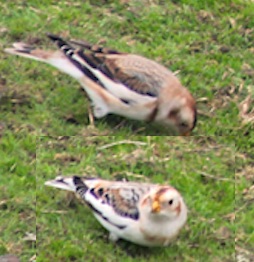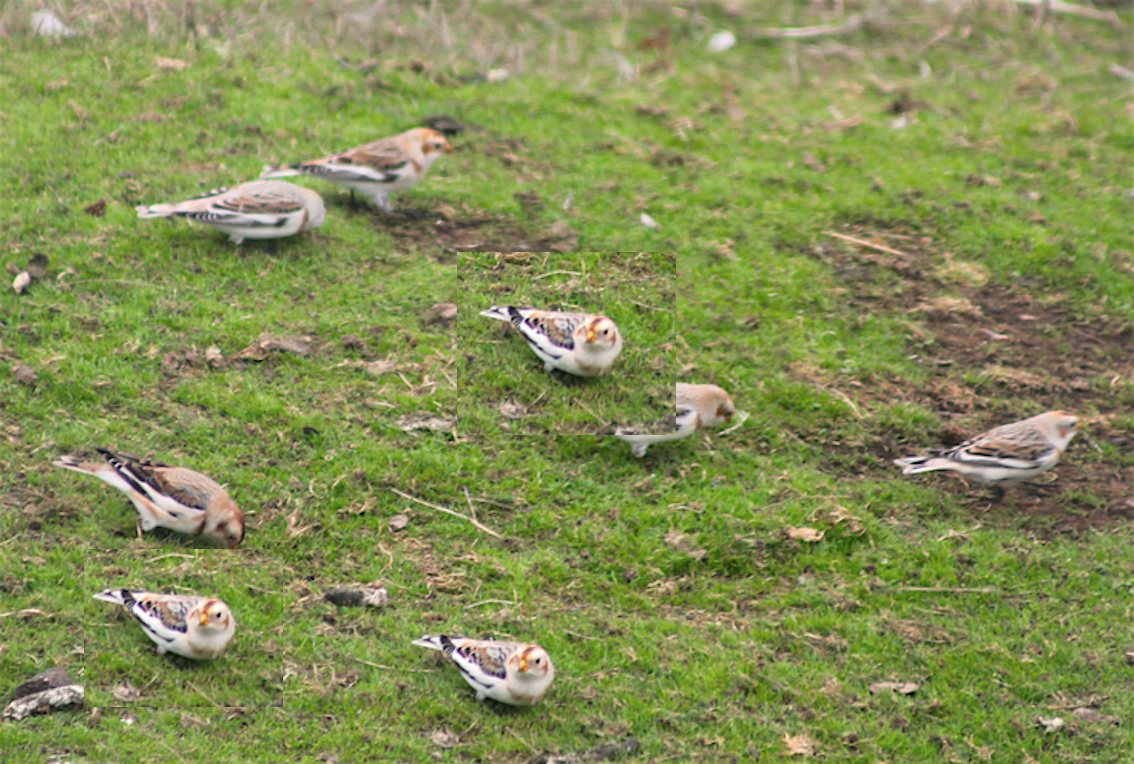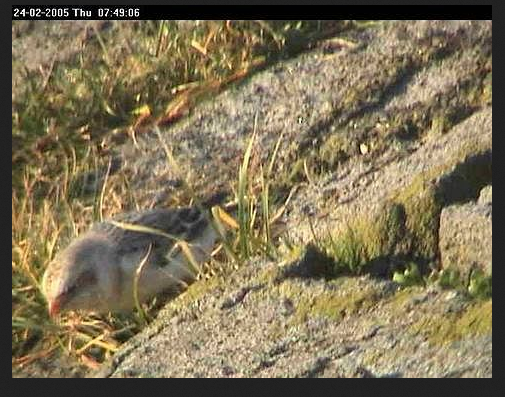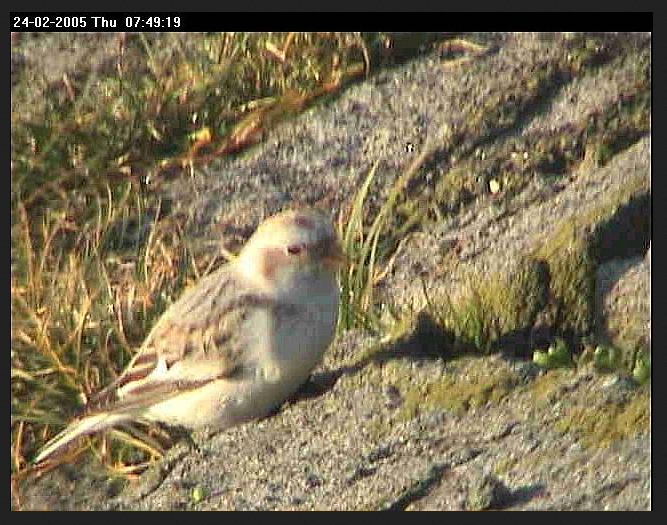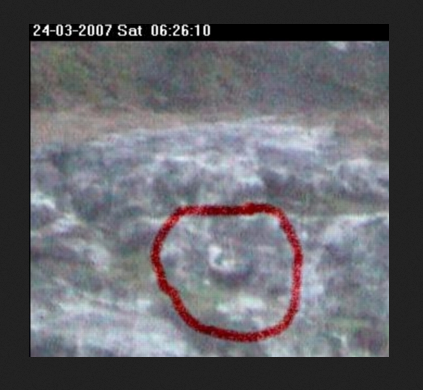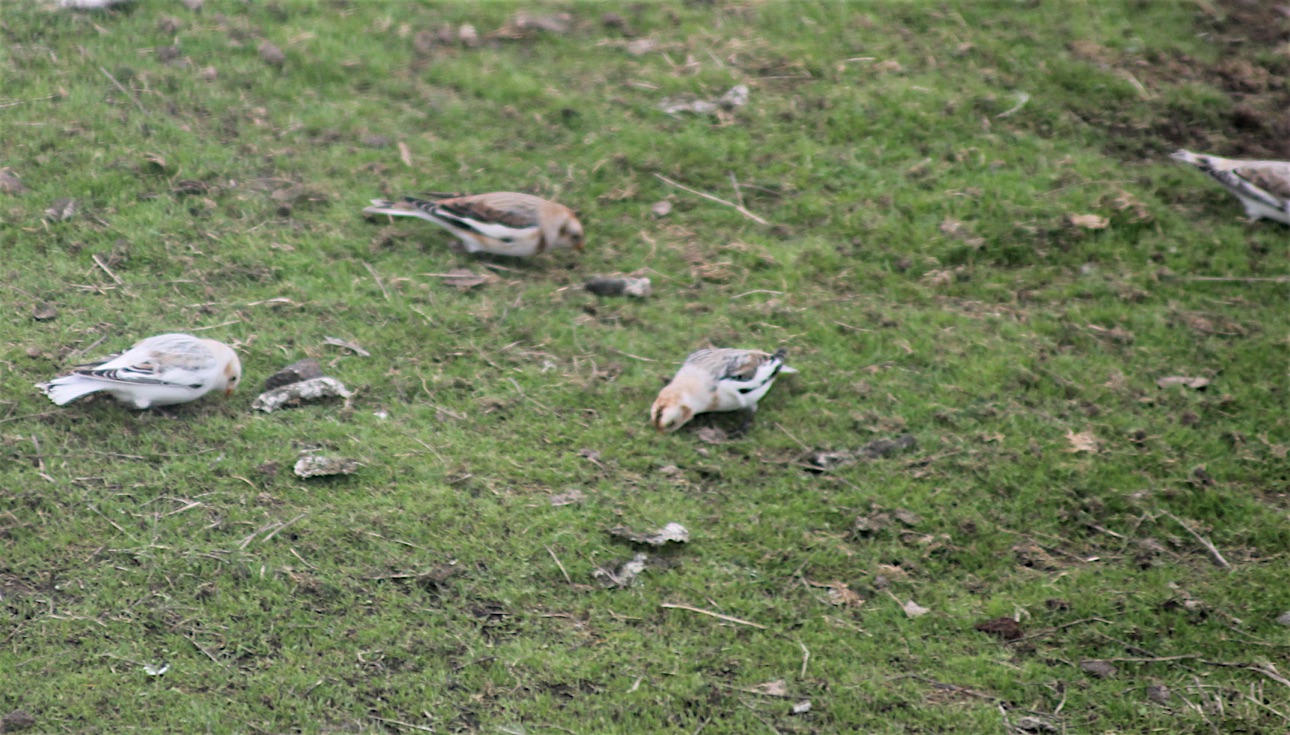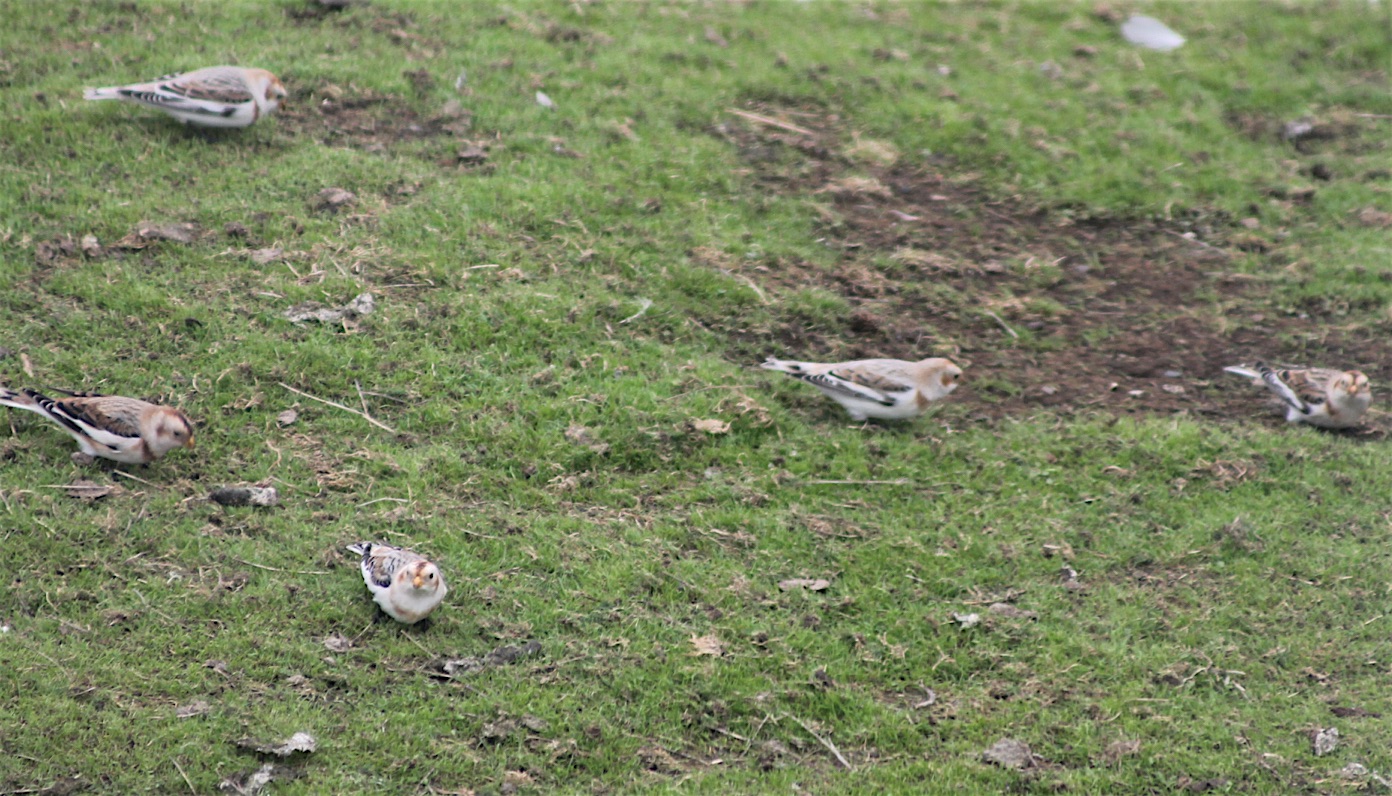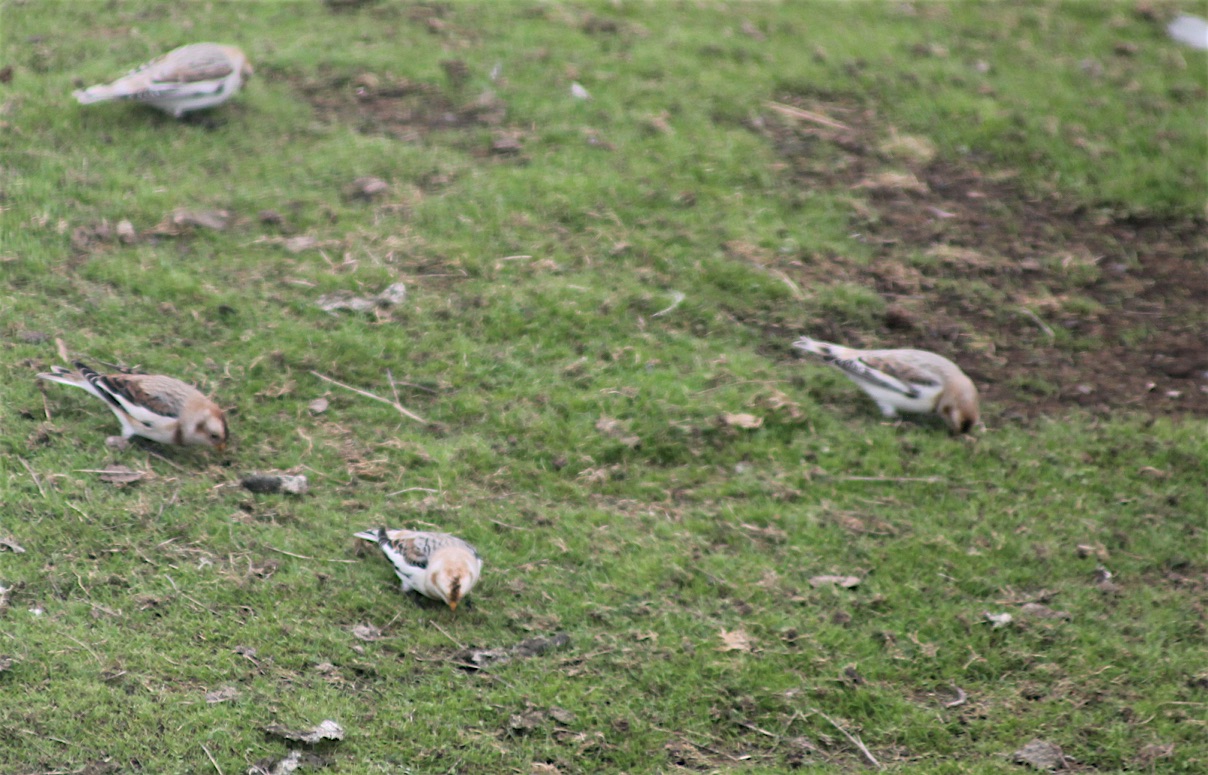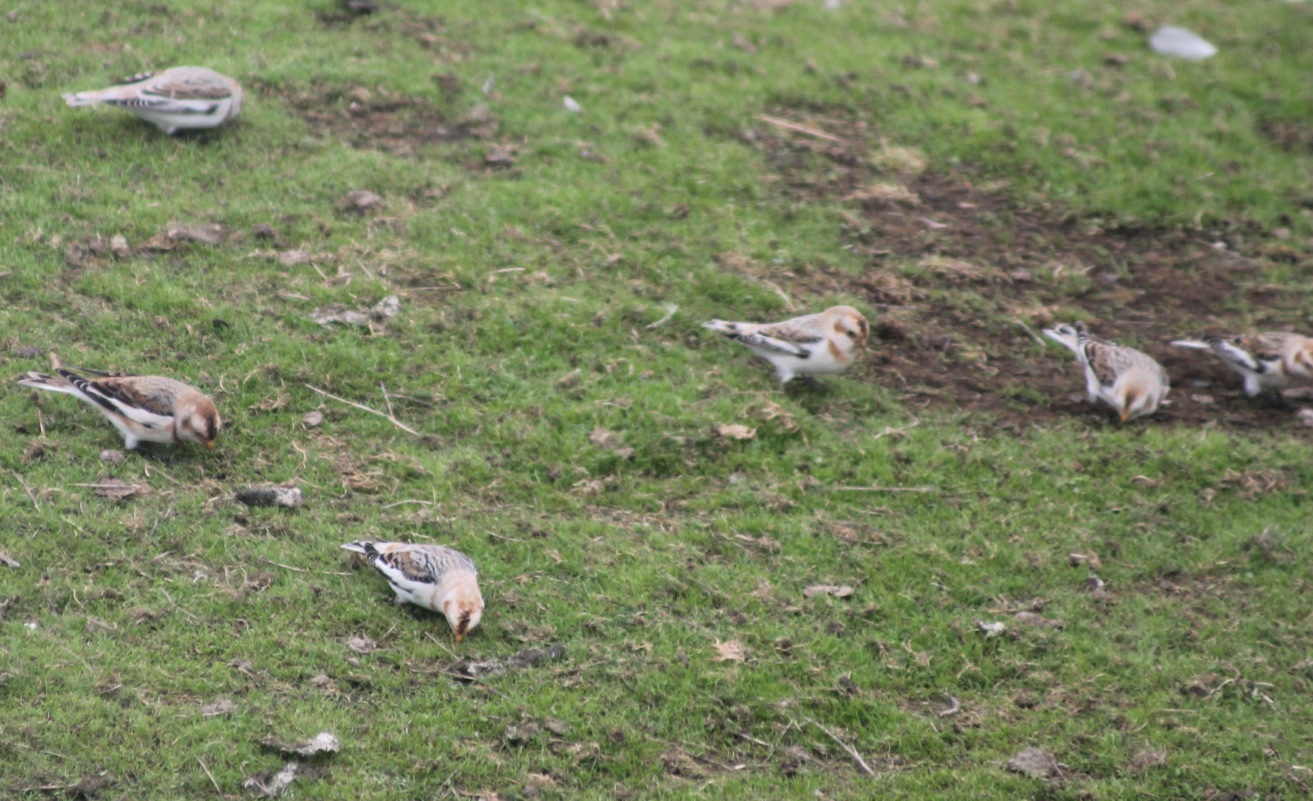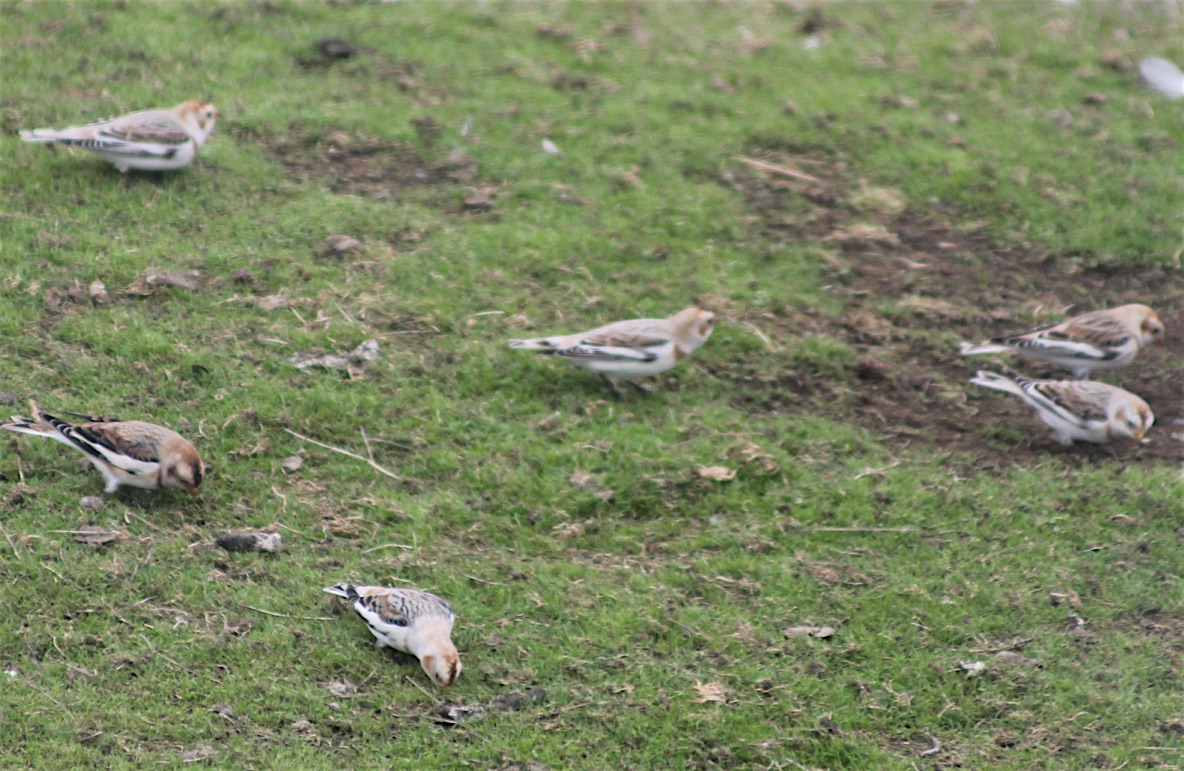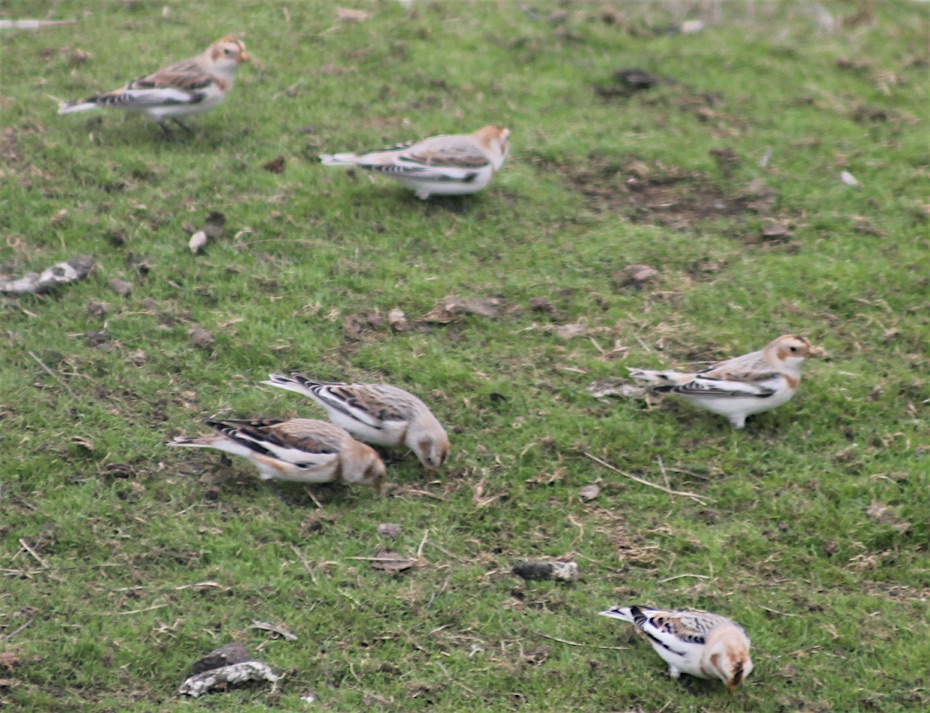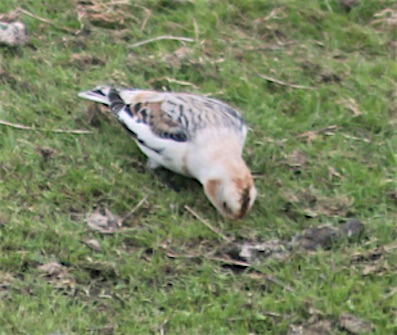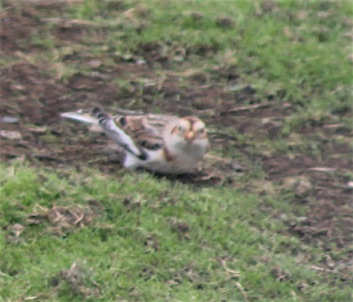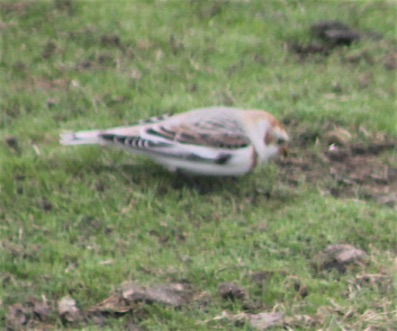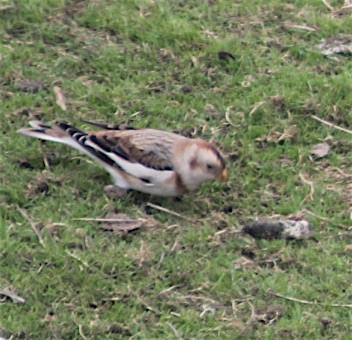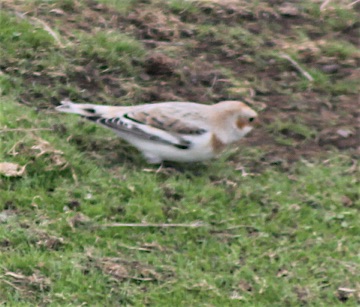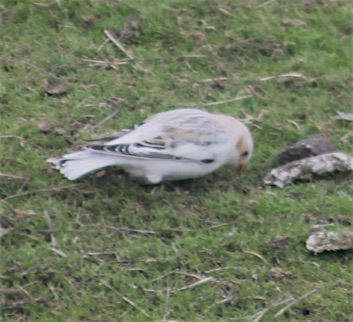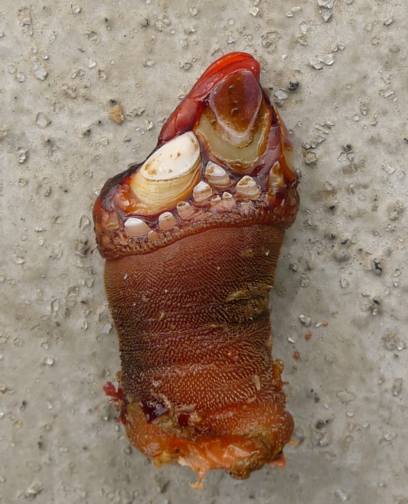Laas Parnell took these pictures of Snow Buntings on November 9, 2017. Pam Birley had been the only one to take pictures of them previously in 2005 and 2007 on the remote cameras at Race Rocks.
This is a very pale Snow Bunting . Snow Buntings are uncommon around Victoria and best seen in late fall-early winter, so any bunting in February is unusual. This is only the fourth Snow Bunting record for the Rocky Point Bird Observatory checklist. The last picture is a poor image through a blurry remote camera 5 housing,but the only one we have so far of a male snow bunting which was taken by Pam in March 2007.
Domain Eukarya
Kingdom Animalia
Phylum Chordata
Sub-Phylum Vertebrata
Class Aves
Order Passerifomes
Family Emberizidae
Genus Plectrophenax
Species nivalis
Common Name: Snow Bunting
Other Members of the Class Aves at Race Rocks.
Images of Snow buntings by Laas Parnell–Ecoguardian at Race Rocks
and Image File |
 The Race Rocks taxonomy is a collaborative venture originally started with the Biology and Environmental Systems students of Lester Pearson College UWC. It now also has contributions added by Faculty, Staff, Volunteers and Observers on the remote control webcams. The Race Rocks taxonomy is a collaborative venture originally started with the Biology and Environmental Systems students of Lester Pearson College UWC. It now also has contributions added by Faculty, Staff, Volunteers and Observers on the remote control webcams.Garry Fletcher |

